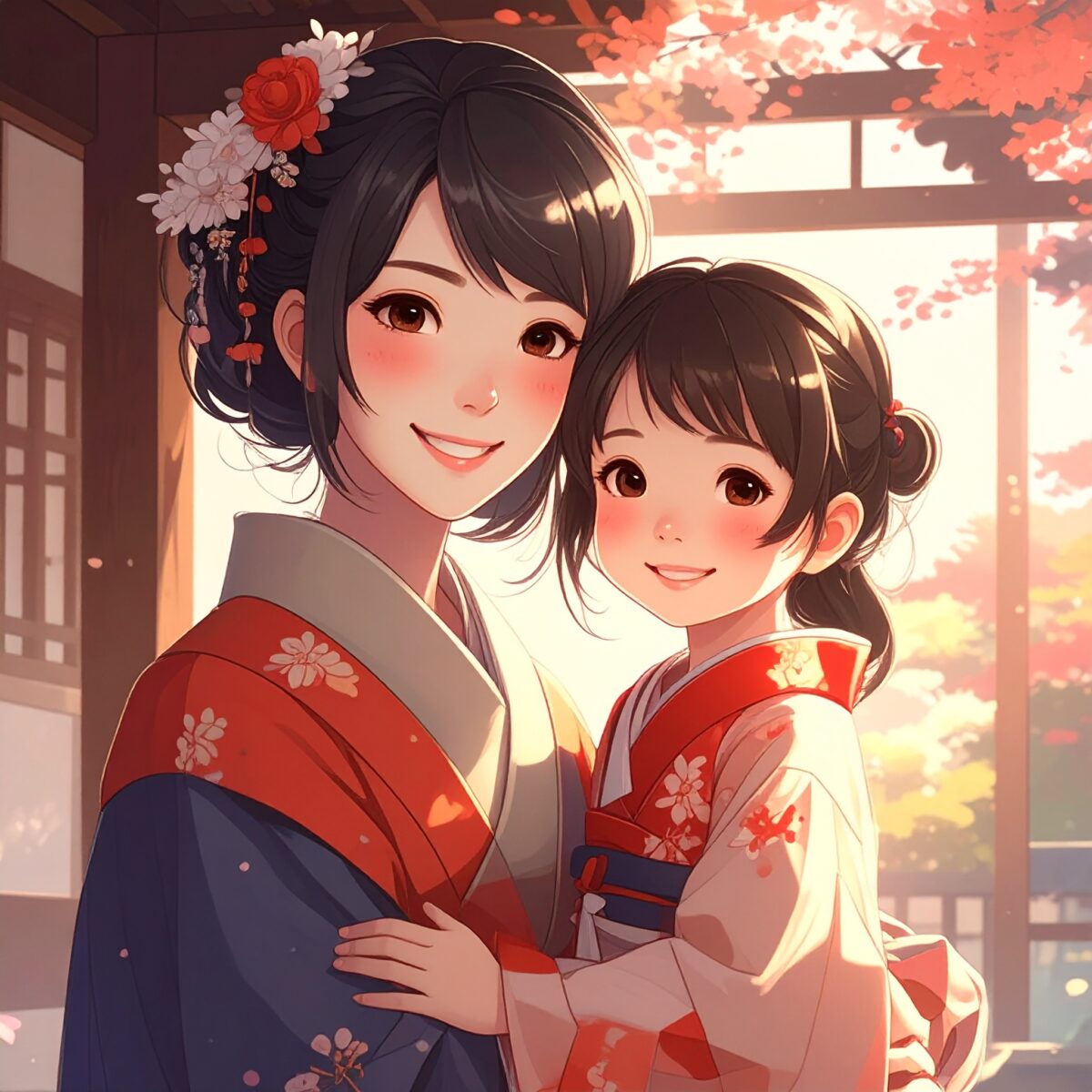Simply by donning traditional fabric, the atmosphere transforms. Movements become more intentional, posture naturally aligns, and one’s presence quietly sharpens. A kimono is more than clothing—it is a refined form of “attire” that shapes both body and spirit. A parent-child kimono dressing experience offers a special opportunity to connect with this unique Japanese sensibility, making it a perfect way to celebrate a meaningful day or create lasting travel memories.
Guided by professional instructors, both parent and child will learn to dress themselves in authentic kimono. From tying the obi belt and adjusting the collar to walking gracefully and positioning the hands, each gesture carries cultural meaning. Learning these movements transforms the simple act of dressing into a mindful ritual, where time itself is savored.
A variety of kimono are available to suit the season and age of participants—from light, cheerful patterns for children to elegant, subdued tones for adults. Just seeing the colorful rolls of fabric lined up is enough to spark anticipation. Before dressing, instructors provide easy-to-understand explanations about kimono names, their history, and the meanings behind specific motifs, allowing participants to appreciate the deeper cultural context as they wear them.
Sliding into the kimono for the first time, many are surprised by the sensation—the weight, the texture, the way it gently wraps around the body. For children especially, the unfamiliar structure may feel strange at first, but the moment they catch a glimpse of themselves in the mirror, their expressions brighten with delight. The sight of a parent helping adjust the obi with care becomes more than a practical act—it becomes a treasured moment of connection, etched in the journey’s memory.

After the kimono dressing session, many programs include options for a leisurely town stroll or a commemorative photo shoot. Walking through historic streets, visiting shrines and temples, or enjoying a park in kimono allows participants to blend seamlessly into the ambiance of the setting. The resulting photographs carry not just beauty, but a sense of story. During cherry blossom season, one can pose beneath falling petals; in autumn, the deep reds of the leaves complement the seasonal attire, enriching the entire experience.
These experiences are thoughtfully designed for visitors unfamiliar with Japanese culture. English-speaking guides and staff are on hand to provide support, ensuring a smooth and enjoyable experience. All necessary items for dressing and undressing are provided, so guests need not worry about bringing anything. Participants are welcome to take photos or videos throughout the process—making even the preparation part of the memory.
For milestone trips, themed plans such as “Shichi-Go-San style,” “Graduation style,” or “Mother-Daughter Memory” are available, allowing for customization based on the purpose of the visit or family occasion. This flexibility has made the experience especially popular among families looking to create their own personal celebration.
Wearing a kimono is not just about outward appearance—it’s an opportunity to reflect on how we carry ourselves. Adjusting the sleeves, tying the obi, watching one’s step—every gesture becomes a mindful act, gently guiding the wearer toward poise and grace. Sharing this process as a family allows for a deeper, wordless understanding of Japanese culture.
Even a single day in kimono leaves a lasting impression. The feel of the fabric, the weight of the obi, and the image of parent and child captured together—all become quiet yet enduring mementos of a journey through Japan.




